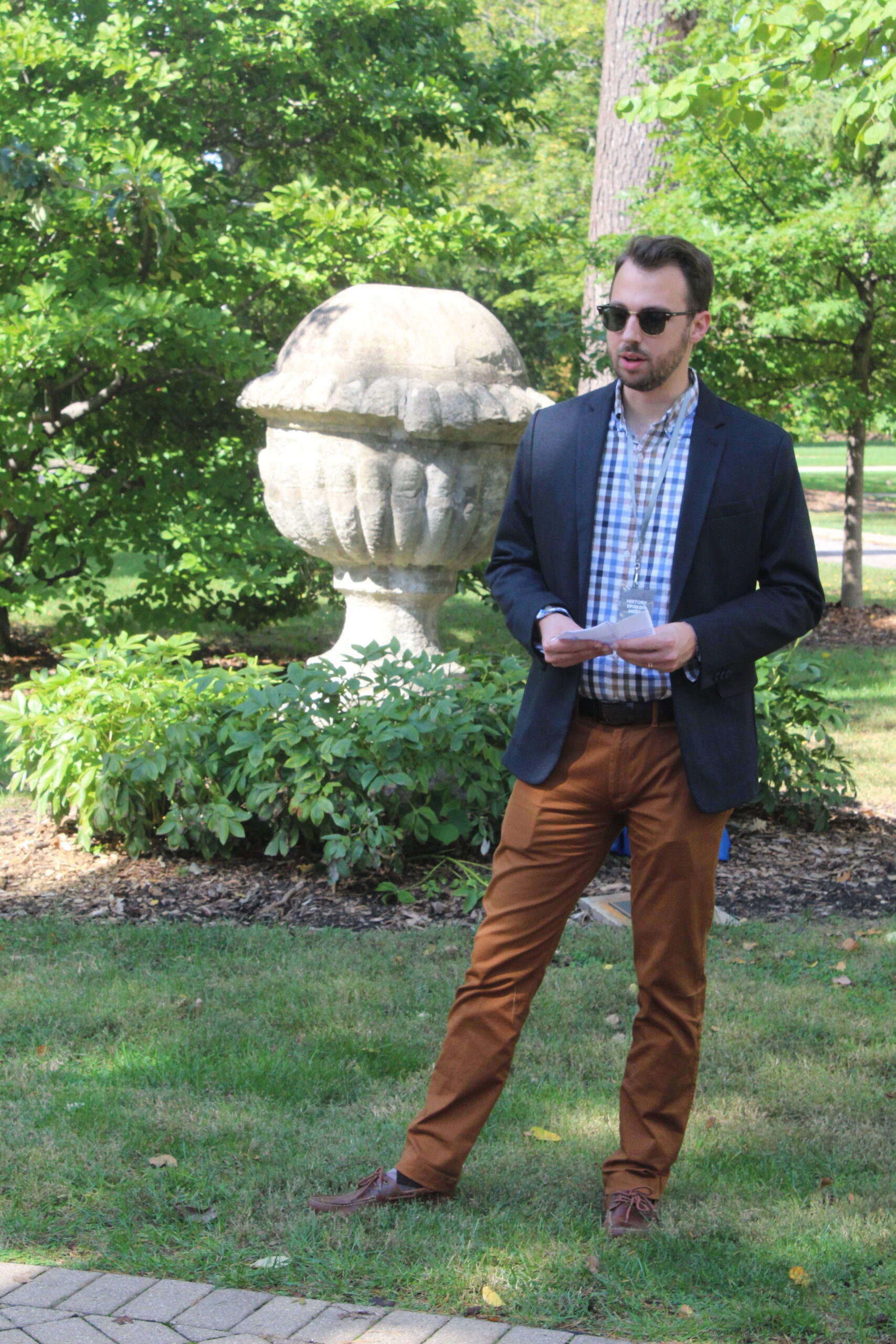By Dee Longfellow
For The Elmhurst Independent

Standing here in front of the finial that survived the Great Chicago Fire is Dan Lund, curator of collections for the Elmhurst History Museum, who gave a short presentation at a rededication ceremony held on the 150th anniversary of Oct. 8, 1871, when the fire began. The event was organized and hosted by the Martha Ibbetson Chapter Daughters of the American Revolution (DAR), who unveiled a new plaque, commemorating the re-dedication.
Friday, Oct. 8 marked 150 years since the Great Chicago Fire began, and Elmhurst has the distinction of owning and displaying a real artifact—a finial from the top of the Cook County Courthouse in downtown Chicago, one of the few structures that remained partially vertical after the fire.
On Friday, Oct. 8, the Martha Ibbetson Chapter Daughters of the American Revolution (DAR) held a ceremony in Wilder Park at the current site of the historical “survivor” of the Great Chicago Fire.
One of the rooftop finials from the Cook County Courthouse, which was nearly destroyed in the fire 150 years ago, is installed near the front entrance of the Wilder Park Conservatory on Prospect Avenue.
The DAR purchased and installed a new plaque for the artifact, which was dedicated at the ceremony. Susan Bussert of the DAR welcomed the group and introduced Daniel Lund, curator of collections of the Elmhurst History Museum, who gave a short talk about the history of the finial and of the fire.
While legend still blames Mrs. O’Leary’s poor cow for kicking over the can that ignited the blaze that could not be stopped, most history experts, including Lund, believe that to be a myth. The main contributors to the fire lasting so long were the facts that (a.) there were high winds; and (b.) virtually everything was made of wood. Even streets were “paved” with wood planks.
Lund shared more historic facts about the Great Chicago Fire: The fire burned through Oct. 10 and left 300 people dead, destroyed roughly 3.3 square miles of the city and 17,000 buildings, and left more than 100,000 people homeless. The cost of the damages was $222 million in 1871 dollars, which would be $4.7 billion in 2020 dollars.
The finial now rests by the Conservatory in Wilder Park, but it once sat majestically high above the Cook County Courthouse building back in 1871. A “brother” finial to the one in Elmhurst is situated along the Chicago lakefront, where the fire occurred. It is unclear exactly where the other finials ended up—some went to private citizens—but Lund said he believed that those in Wilder Park and the lakefront are the only two that allow public access.
Following the program, members of the DAR unveiled the plaque to a round of applause.


